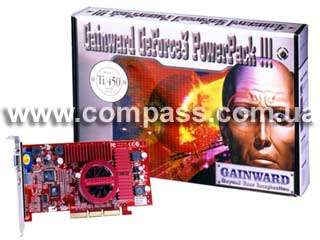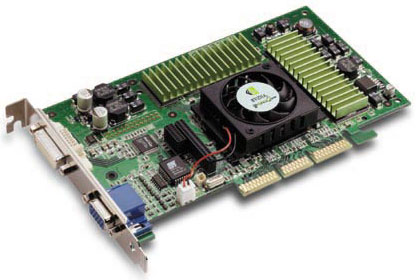GeForce 3 Ti 200

And if we add to this that the new product from ATI had more capabilities than GeForce3, then the reason why the "queen" got excited becomes clear. And when the preliminary prices for such a card became clear (maximum 9), NVIDIA clutched its head. Unfortunately for her, and fortunately for all users, NVIDIA does not have power over ATI as the English queen once over the Scottish one, so there can be no "execution". However, all this led to the release of previously unplanned products from NVIDIA. As expected, NVIDIA has accelerated the GeForce3 with a faster GPU. But the marketers of this company do not eat their bread in vain. Once a competitor has come out, it is necessary to "impose" him not only from above, but also from below. And it was decided to release not one chip, but two, that is, a line. She was named Titanium,
With one shot, NVIDIA kills several birds with one stone. Firstly, the older model is no longer afraid of the speed superiority of the RADEON 8500 (especially since ATI had difficulty getting a sufficiently high yield percentage of good chips operating at 275 MHz), and secondly, the younger model gets an aggressively low price, which should greatly increase its attractiveness. Thirdly, NVIDIA solved the problem in this way - what to do with chips that are guaranteed not to work at 200 MHz.

Thus, users got the GeForce3 in two faces: faster and slower than the original release in spring 2001. The "older" brother was named Ti 500 (Titanium 500), the "younger" brother - Ti 200 (Titanium 200). The difference between them consisted solely in the frequencies of the GPU and memory. The Ti 200 did not have any "cuts".
Specifications GeForce 3 Ti200
| Name | GeForce 3 Ti200 |
| Core | NV20 |
| Process technology (µm) | 0.15 |
| Transistors (million) | 60 |
| Core frequency | 175 |
| Memory frequency (DDR) | 200 (400) |
| Bus and memory type | DDR-128bit |
| Bandwidth (Gb/s) | 6.4 |
| Pixel pipelines | 4 |
| TMU per conveyor | 2 |
| textures per clock | 8 |
| textures per pass | 4 |
| Vertex conveyors | 1 |
| Pixel Shaders | 1.1 |
| Vertex Shaders | 1.1 |
| Fill Rate (Mpix/s) | 700 |
| Fill Rate (Mtex/s) | 1400 |
| DirectX | 8.0 |
| Anti-Aliasing (Max) | MS - 4x |
| Anisotropic Filtering (Max) | 8x |
| Memory | 64 / 128 MB |
| Interface | AGP4x |
| RAMDAC | 350MHz |
For experienced users, this only meant that he could buy a relatively cheap GeForce3 Ti 200-based card and turn it into a full-fledged GeForce3 without even straining the card too much.



